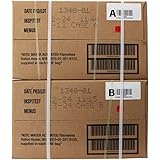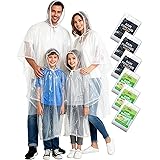Understanding Your Local Risks
Assessing Potential Hazards
Whenever I think about preparing for natural disasters, I realize the first thing I need to do is understand the potential hazards in my area. Is it hurricanes, earthquakes, wildfires, or floods? Knowing what disasters are likely to occur helps me create a solid plan. I remember when I first moved to the coast; I had to dive into research—the last hurricanes weren’t just history; they were crucial to my safety.
I started by checking local government websites and resources that provide detailed information on risks. I also read community reports and even spoke to long-time residents. Each conversation shared insights that I otherwise wouldn’t have found on my own. It’s amazing how much you can learn just by chatting with folks around you!
In short, take a moment to list down the potential hazards and their frequency in your area. It makes everything else feel way more manageable, and trust me, this first step lays the groundwork for everything that follows.
Historical Patterns and Data
Next up in my journey was digging into historical data. What’s happened in my location over the years? This is where I learned about the importance of reviewing past disasters. Statistics are fascinating—they tell a story of what could happen again. I found comprehensive tables and graphs comparing the damage levels and how communities responded.
Moreover, understanding how local infrastructure held up or faltered during past events helped shape my expectations about current systems. For instance, if an area flooded a few years ago, I made sure to note it and assess the improvements made since. That gave me clues about whether I needed to prioritize my home’s elevation or flood barriers.
Bringing a historical context into play doesn’t just educate you; it emboldens your preparation. I feel more informed and thankfully proactive because of it.
Community Engagement
Engaging with my community was one of the most critical steps regarding disaster preparedness. I attended town hall meetings and local workshops focused on emergency response. It’s incredible how much information can flow when you gather with like-minded people working toward the same goal. There’s a sense of camaraderie in knowing everyone has your back.
Furthermore, local volunteers can share practical advice on setting up emergency plans or creating neighborhood response teams. I learned about buddy systems where we looked out for each other—especially important for the elderly or those with special needs.
== > What if ... Get a FREE Subscription to PREPARE
Through these engagements, I felt a camaraderie that fortified my spirit. We all have different strengths, and when we band together, we can build resilience against any disaster.
Creating a Comprehensive Emergency Plan
Formulating a Family Plan
Once I grasped the local risks and community dynamics, it was time to formulate a family emergency plan. All family members should know what to do before, during, and after a disaster. I gathered everyone around the table and we brainstormed options together—it was eye-opening to hear each person’s thoughts!
We outlined communication strategies—how we would reach one another if separated and establishing a meet-up point. Ultimately, it made the plan more personal and engaging. From discussing evacuation routes to essentials like medications, it felt great knowing we were all on the same page.
Practice drills became a family activity! Knowing that we can rely on each other for quick thinking in those critical moments eased some anxiety. I mean, who doesn’t feel empowered knowing they’re ready for anything?
Emergency Supply Kit Preparation
Everyone talks about stockpiling emergency supplies, but I had my own unique take on putting together my kit. Besides food and water, I ensured our kit had personal items like pet supplies and comfort items. During stress, having a few familiar items can bring immense solace!
I spent an afternoon going through everything at home, making a fun little game of checking off essentials. It became a goofy adventure as we ended up finding some items we thought we’d lost. Eventually, we consolidated everything into sturdy, labeled bins—easy to grab in case of an emergency.
From flashlights to board games, our kit has evolved into a reliable resource full of everything we might need. It felt satisfying to create something I knew would contribute to our safety.
Regular Plan Reassessment
Preparing for natural disasters isn’t a ‘set it and forget it’ kind of deal. I made it a habit to reassess our plan regularly; the more frequent, the better! You wouldn’t believe how our lives change over time—new family members, job changes, and even technology advancements all impact how we prepare.
Get Preparedness and Self-Reliance Tips. Subscribe Now!
I set a reminder every six months to gather the family and go through the whole plan. Checking each item in our emergency kit, running through communication strategies, and adapting to any new circumstances kept our preparedness fresh and relevant.
Plus, reassessing gives me a chance to teach my kids about resilience and adaptability. Each time feels like extra practice for them, creating a lasting mindset of preparedness. I can’t stress enough how important it is to constantly evolve your plan!
Building Community-Based Resilience Programs
Collaborative Workshops and Training
Getting involved in community resilience programs is a fantastic way to prepare as a collective. I remember joining forces with local fire departments and NGOs to conduct workshops and training activities for residents. They covered everything from first aid to evacuation strategies—and the best part? It was all hands-on!
These workshops brought together people from diverse backgrounds, sharing insights and building skills. I learned quick techniques for fire extinguishing and how to assess damages after storms. It made me feel more included in our community while securing vital information for emergencies.
What I loved most was the sense of unity formed during these sessions. We were strengthening not only our knowledge but also our bond. It felt great knowing I was making friends while preparing for the unexpected.
Creating a Resource Network
Another gem I discovered was establishing a resource network within our community. The idea is simple: gather a plethora of local resources available for emergencies, from shelter options to food banks. I got this brilliant thought from a neighbor who works at a community center and proposed creating a shared document.
This document proved invaluable! It connected us with crucial resources and even set up protocols for contacting local businesses during disasters. We reached out to food truck owners and heard the most heartwarming stories about helping those affected by previous disasters. It’s not just utility; it’s real compassion at work!
The great thing about forming a resource network is the personal touch. It’s about fostering relationships within the community. Knowing who to call on in emergencies bridges the gap and provides reassurance when things get chaotic.
Advocacy for Local Policy Changes
Lastly, I realized advocating for local policy changes can significantly enhance preparedness! I started attending local government meetings, voicing concerns, and even joining forums that discuss resilience plans. It became clear early on that we need updated building codes and improved disaster response protocols.
Getting involved in advocacy not only raised awareness but also allowed us to push for essential improvements in our infrastructure. There’s immense satisfaction when a group of residents rallies for a cause—believe me, your voice matters! I remember leading a petition that called for better flood control measures, and it felt good making an impact.
Seeing the wheels of change turn is energizing, making me feel hopeful about our community’s future. I firmly believe that change starts at the grassroots level, and by leading initiatives together, we can foster safer environments for ourselves and those that follow.
FAQs
1. What is the first step in disaster preparation?
The first step is understanding your local risks by assessing potential hazards that may occur in your area. Researching the history of past disasters can give you valuable insight.
2. How often should I review my emergency plan?
It’s essential to reassess your emergency plan at least every six months. Life changes often, and keeping your plan updated ensures it’s relevant and effective.
3. What should I include in my emergency supply kit?
Your emergency supply kit should include essentials like non-perishable food, water, medications, first aid supplies, flashlights, batteries, personal items, and comfort items for family members.
4. How can I engage with my community to improve disaster preparedness?
Engaging with your community can be done by attending local workshops, forming resource networks, and joining advocacy groups that focus on improving disaster preparedness and response strategies.
5. What is the significance of community resilience programs?
Community resilience programs foster collaboration among residents, sharing knowledge, skills, and resources, which together enhances overall safety and preparedness against natural disasters.
Get Preparedness and Self-Reliance Tips. Subscribe Now!
Related Content
Augason Farms Dehydrated Cross Cut Celery Can, Emergency Food Supply, Everyday Meals, 36 Servings
$18.35 (as of December 25, 2025 18:19 GMT -05:00 - More infoProduct prices and availability are accurate as of the date/time indicated and are subject to change. Any price and availability information displayed on [relevant Amazon Site(s), as applicable] at the time of purchase will apply to the purchase of this product.)Wornick Sopacko, Ameriqual MRE Meals Ready to Eat Inspection 2025, 2026 or Better, Emergency Food Supply, Survival Camping Outdoor 12 Pack(A & B Case Bundle, 2, Count)
Now retrieving the price.
(as of December 25, 2025 18:19 GMT -05:00 - More infoProduct prices and availability are accurate as of the date/time indicated and are subject to change. Any price and availability information displayed on [relevant Amazon Site(s), as applicable] at the time of purchase will apply to the purchase of this product.)





